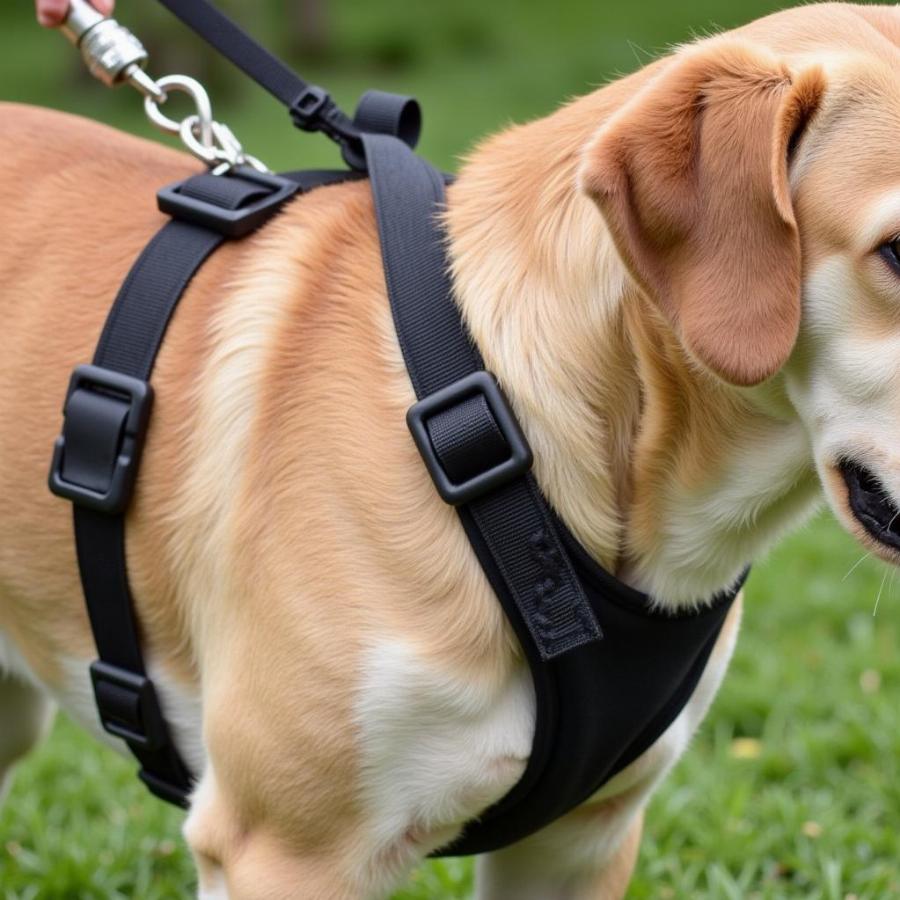Dog cart pulling is a fascinating activity that combines the strength and intelligence of dogs with the practicality of transporting goods or even people. Whether you’re envisioning a picturesque scene of a dog pulling a cart through a snowy landscape or simply seeking a helpful way to carry groceries, understanding the nuances of dog cart pulling is essential. This guide will explore the history, training techniques, equipment considerations, and responsible practices for this engaging activity.
Choosing the Right Breed for Cart Pulling
Not all breeds are suited for cart pulling. While many dogs can learn to pull a cart, some breeds excel due to their size, strength, and temperament. Historically, breeds like Bernese Mountain Dogs, Saint Bernards, and Newfoundlands were bred for draft work, making them ideal candidates. Other suitable breeds include Rottweilers, Siberian Huskies, and Alaskan Malamutes. It’s crucial to consider the dog’s individual personality and physical capabilities before starting any cart pulling training.
Essential Equipment for Dog Cart Pulling
Proper equipment is vital for the safety and well-being of your dog. The harness is the most critical piece of equipment, and it must fit correctly to distribute weight evenly and prevent injury. Avoid using collars for cart pulling as they can put strain on the dog’s neck and trachea. The cart itself should be appropriately sized and balanced for your dog, ensuring it’s not too heavy or cumbersome. Consider carts with pneumatic tires for a smoother ride on various terrains. Additional equipment can include a brake system for the cart and safety lights for visibility.
 Dog Cart Pulling Harness Example
Dog Cart Pulling Harness Example
Training Your Dog for Cart Pulling
Training your dog to pull a cart should be a gradual and positive experience. Start with basic obedience training to establish a solid foundation of communication and trust. Introduce the cart and harness gradually, allowing your dog to become accustomed to the equipment. Begin with short, easy pulls on flat terrain, gradually increasing the distance and weight as your dog’s strength and confidence build. Positive reinforcement, using treats and praise, is essential throughout the training process.
What are some common mistakes to avoid in cart pulling training?
One common mistake is starting too early. Puppies and young dogs are still developing, and cart pulling can put excessive strain on their growing bones and joints. It’s best to wait until they are physically mature before starting training. Another mistake is rushing the process. Patience is key to successful cart pulling training. Finally, using harsh methods or punishment will damage your relationship with your dog and hinder their learning.
Safety Considerations for Dog Cart Pulling
Safety should always be the top priority. Never overload the cart beyond your dog’s capacity, and avoid pulling on hot pavement, which can burn their paws. Ensure your dog is properly hydrated, especially during warmer weather. Be mindful of potential hazards on your route, such as traffic or uneven terrain. Regularly inspect your equipment for wear and tear, and replace any damaged parts promptly.
Is Dog Cart Pulling Cruel?
Dog cart pulling, when done responsibly, is not cruel. It can be an enriching activity for dogs, providing physical exercise and mental stimulation. However, improper training, unsuitable equipment, or overloading the cart can lead to injury and stress. Prioritizing your dog’s well-being is paramount to ensure a positive and safe experience.
The History of Dog Cart Pulling
Dog cart pulling has a rich history, dating back centuries when dogs were utilized for various tasks, including transporting goods and assisting with farm work. Different cultures around the world have employed dogs for cart pulling, adapting the practice to their specific needs and environments. From the milk carts of old Europe to the sled dogs of the Arctic, the history of dog cart pulling showcases the versatile working partnership between humans and canines.
Conclusion
Dog cart pulling can be a rewarding activity for both dog and owner when approached responsibly. By understanding the essential elements of breed selection, equipment, training, and safety, you can ensure a positive and enriching experience for your canine companion. Remember, a well-trained dog pulling a cart is a testament to the remarkable bond between humans and animals.
FAQs
- What age can a dog start cart pulling? Wait until your dog is physically mature, typically around 1-2 years old, depending on the breed.
- How much weight can a dog pull? This depends on the dog’s size, breed, and training. Start with light loads and gradually increase the weight as your dog builds strength.
- What type of harness is best for cart pulling? A well-fitted carting harness designed to distribute weight evenly across the dog’s body.
- Is cart pulling suitable for all dogs? No, some breeds are better suited than others. Consider your dog’s individual physical capabilities and temperament.
- Where can I find dog cart pulling equipment? Specialized pet stores and online retailers often carry carting equipment.
Related Resources on Beaut Dogs
You may also find these articles helpful: dog pulling cart and harness and heavy duty dog collars.
Beaut Dogs is your trusted source for comprehensive information on all aspects of dog ownership, from breed selection to specialized care. We are passionate about providing valuable insights and expert advice to help you navigate the wonderful world of canine companionship. When you need support, please contact us via Email: [email protected] to receive detailed and accurate answers from Beaut Dogs.